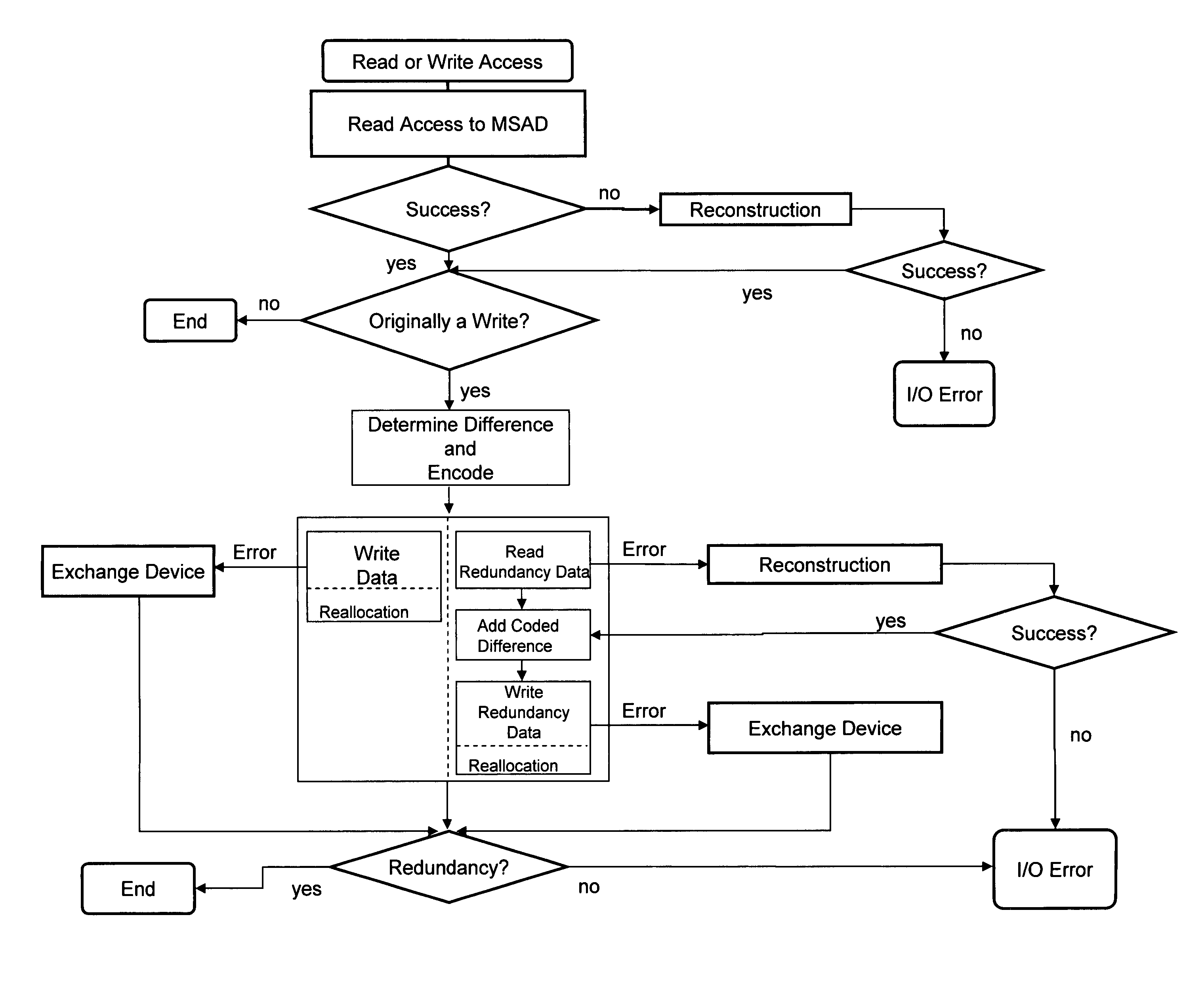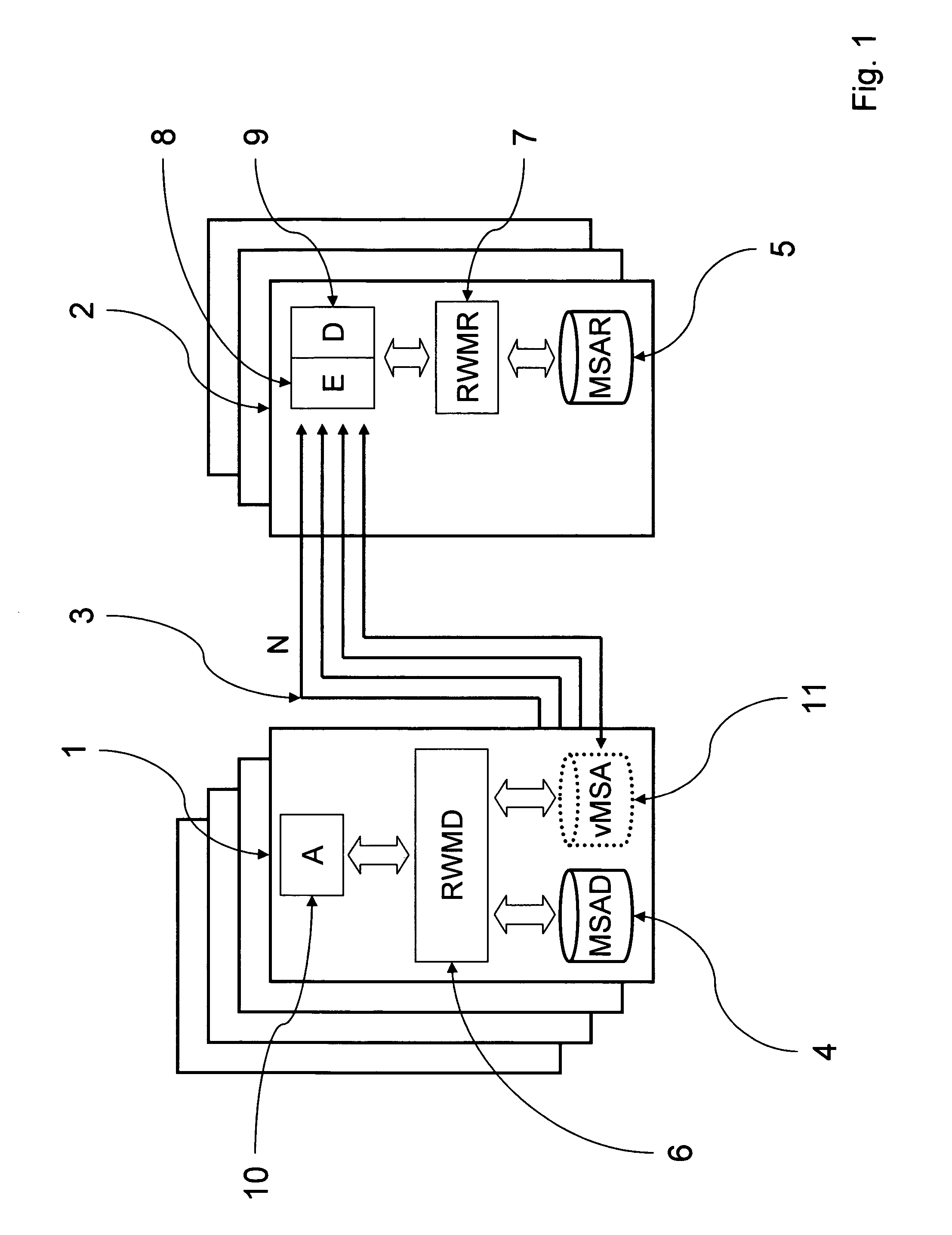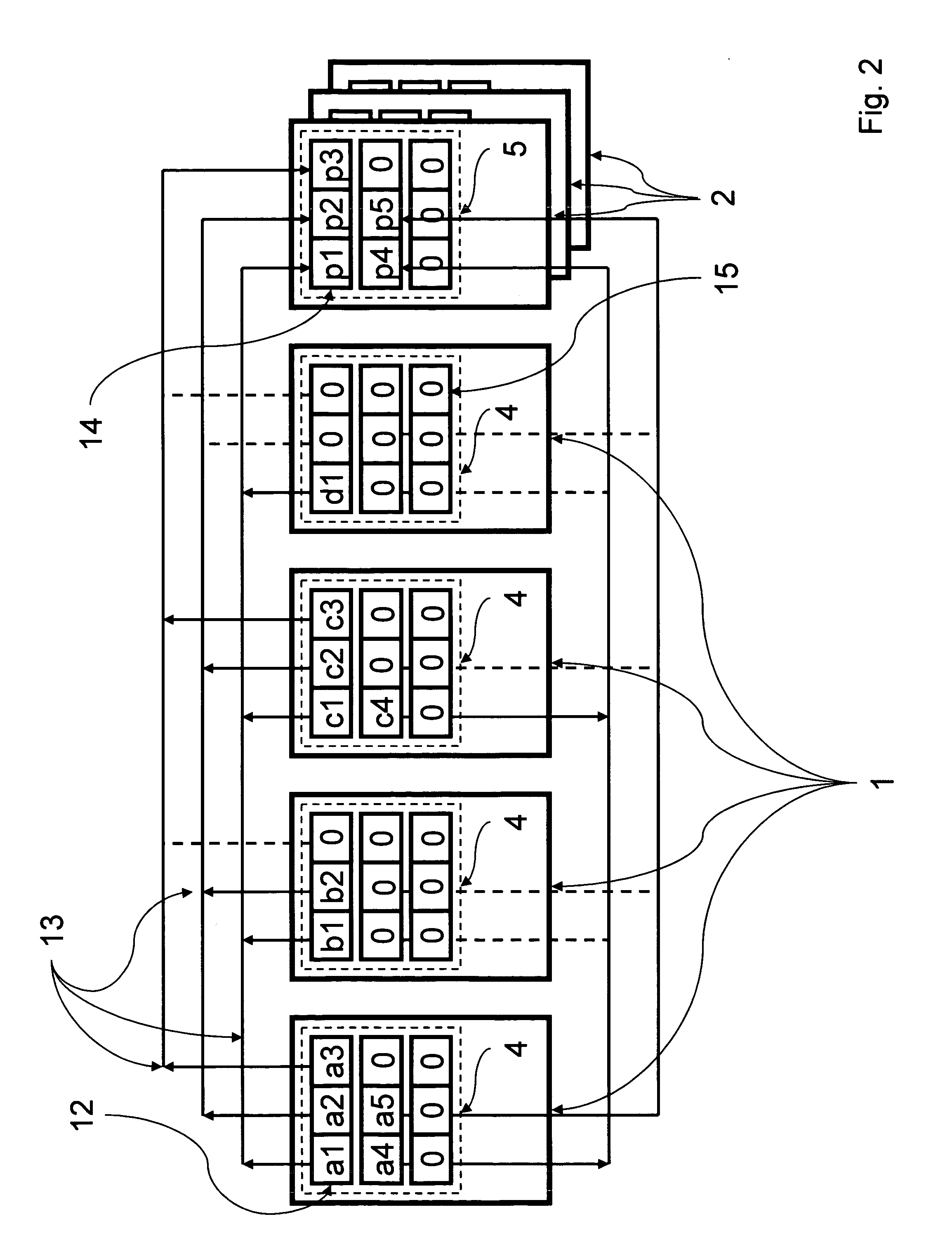Method and apparatus for enabling high-reliability storage of distributed data on a plurality of independent storage devices
a storage device and distributed data technology, applied in the field of methods and apparatus for enabling high-reliability storage of, can solve the problems of inability to tolerate a single disk failure, inability to reliably, and inability to reliably, and achieve the effects of low network communication requirements, easy detection, and high reliability
- Summary
- Abstract
- Description
- Claims
- Application Information
AI Technical Summary
Benefits of technology
Problems solved by technology
Method used
Image
Examples
Embodiment Construction
[0017]FIG. 1 shows schematically the simplified functional architecture of a preferred embodiment of a distributed storage cluster computer system in accordance with the invention. As shown, the system may comprise a plurality of nodes (1), each embodying a mass storage area for user data (MSAD) (4) and a plurality of nodes (2), each embodying a mass storage area for redundancy data (MSAR) (5). Each node (1, 2) may be an independent computer having one or more associated data storage devices that provide one or more of the mass storage areas. The system has at least one mass storage area of each kind. In the preferred embodiment, the mass storage areas for user data and those for redundancy information may be assigned to dedicated nodes, or nodes may implement both functionalities.
[0018]All nodes in the system are connected by a network (3). All nodes contain at least one mass storage area MSAD, MSAR (4,5) which is part of the system. All storage areas are block-oriented. They are s...
PUM
 Login to View More
Login to View More Abstract
Description
Claims
Application Information
 Login to View More
Login to View More - R&D
- Intellectual Property
- Life Sciences
- Materials
- Tech Scout
- Unparalleled Data Quality
- Higher Quality Content
- 60% Fewer Hallucinations
Browse by: Latest US Patents, China's latest patents, Technical Efficacy Thesaurus, Application Domain, Technology Topic, Popular Technical Reports.
© 2025 PatSnap. All rights reserved.Legal|Privacy policy|Modern Slavery Act Transparency Statement|Sitemap|About US| Contact US: help@patsnap.com



